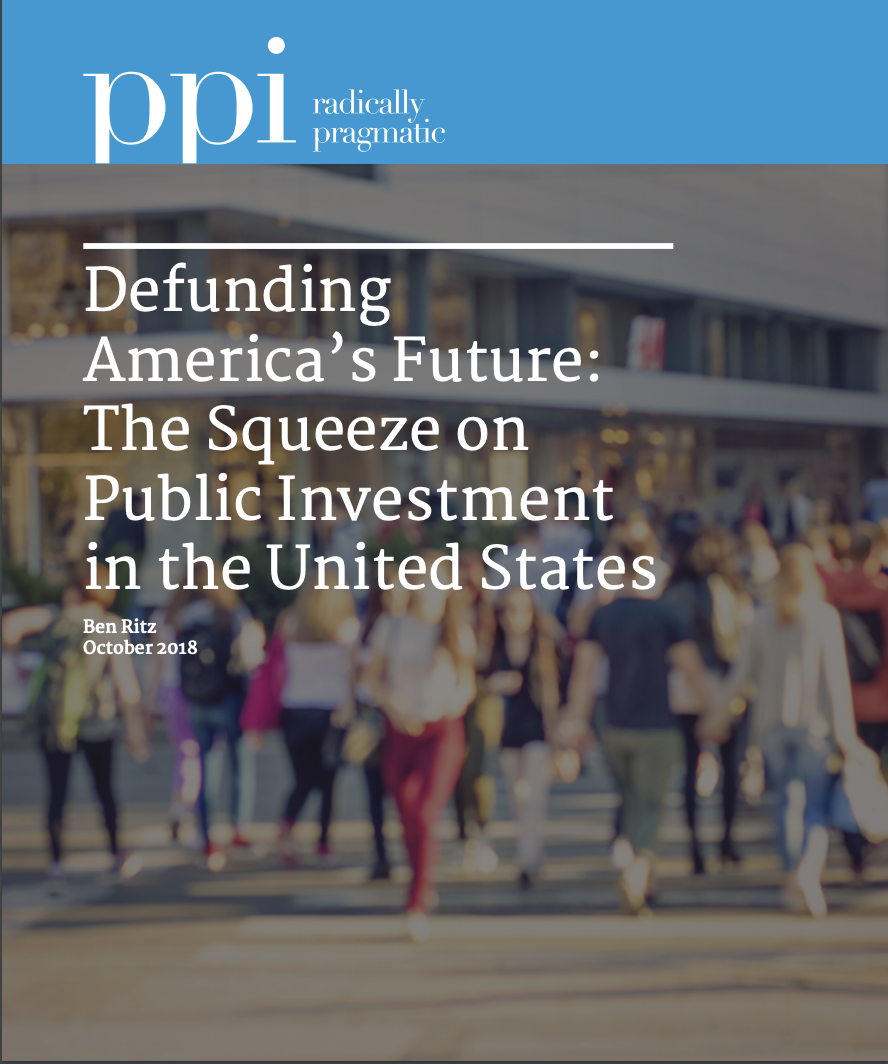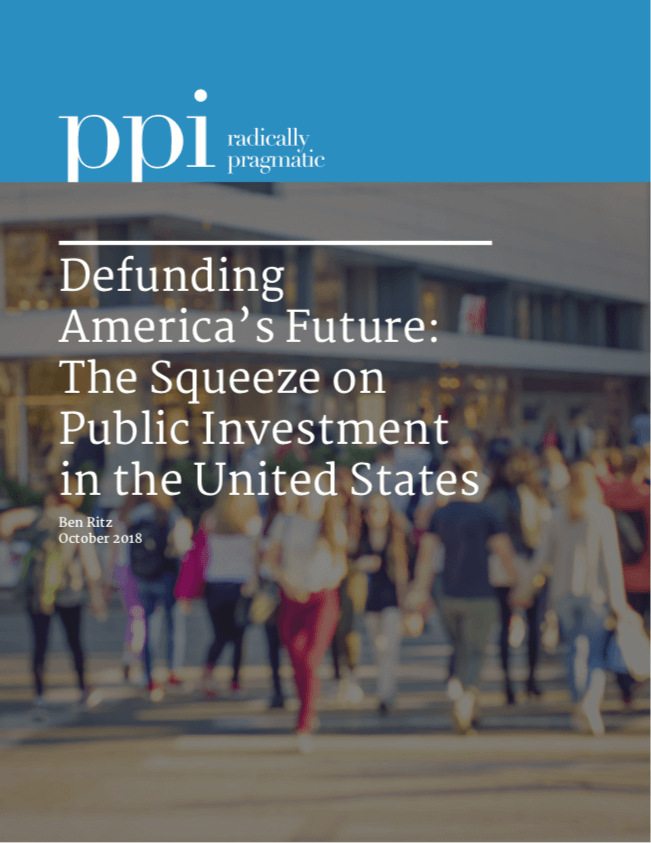Executive Summary
Policymakers who have chosen to slash critical public investments in future generations while simultaneously saddling these generations with a mountain of debt are jeopardizing the long-term economic health of the United States. Failure to correct course could have serious consequences for the economy and the American people, including lower incomes, fewer high-quality jobs, and a reduced ability for future policymakers to address new challenges.
America’s deteriorating fiscal condition should be a central issue in the 2018 midterm and the 2020 presidential elections. As Republicans in Congress and the White House abandon any pretense of fiscal responsibility, the time is right for Democrats to offer a new progressivism that invests in our country without leaving the bill to young Americans.
The goal of this report is to alert the public and policymakers to the problem and highlight the actions our elected leaders must take to avoid fiscal ruin, which include renewing public investments in the foundation of our economy, modernizing federal health and retirement programs to reflect an aging society, and enacting pro-growth tax reform that raises the revenue necessary to support both of these critical government functions.
DEBT AND DEFICITS THREATEN PUBLIC INVESTMENTS (PP. 5-11):
• By 2029, the national debt as a percentage of gross domestic product is projected to surpass the all-time high reached at the end of World War II if current policies remain in place. And on that trajectory, the national debt would grow to more than double the size of the U.S. economy within the next 30 years.
• All this borrowing comes at an enormous cost: if current policies remain in place, annual interest payments would rise from $316 billion today to nearly $1 trillion in 2028. At that point, annual interest costs would be twice the projected federal spending on public investments in education, infrastructure, and scientific research combined.
INSTEAD OF ADDRESSING THE PROBLEM, TODAY’S POLICYMAKERS ARE MAKING IT WORSE (PP. 12-17):
• While virtually every other developed country from Germany to Japan is paying down their debts, self-proclaimed “king of debt” Donald Trump and the Republican-controlled Congress have been making ours bigger. In the span of just two months, they enacted $2 trillion in tax cuts and abandoned spending caps that Republicans demanded be imposed at a time when most economists believed it was far more perilous to cut spending than it is today.
• The last time the national unemployment rate was as low as it was for most of 2018, the Clinton administration was in its fourth consecutive year of budget surpluses. But, thanks to the GOP’s borrow-and-spend policies, the next presidential election in 2020 – and potentially every election thereafter – will occur against the backdrop of an annual budget deficit of over $1 trillion.
PUBLIC INVESTMENTS ARE BEING STARVED BY BAD BUDGETING (PP. 17-21):
• Between 1965 and 1980, total federal spending on public investments in education, infrastructure, and scientific research regularly equaled about 2.5 percent of GDP (which would have been roughly $470 billion in 2017). But misguided cuts imposed by policymakers seeking to reduce deficits have taken their toll: Federal spending on public investment was just over $300 billion in 2017 – less than 1.5 percent of GDP.
If current policies are continued, public investment spending is projected to fall to its lowest level in modern history as a share of the economy by 2026. Public investment spending is likely to be cut even more in the future if policymakers are unwilling or unable to tackle the main drivers of growing deficits.
SECURING PUBLIC INVESTMENTS REQUIRES FIXING HEALTH CARE AND RETIREMENT PROGRAMS (PP. 21-29):
• While spending on public investments shrinks, spending on Medicare, Medicaid, and Social Security is growing on autopilot due to an aging population. Spending on these programs relative to the size of the economy is projected to grow by half over the next 30 years (from about 10 percent of GDP today to nearly 16 percent of GDP in 2048).
• In 1965, there were 5.4 working-age Americans (those between the ages of 18 and 64) who could pay taxes to finance the health care and retirement benefits of each American aged 65 and older. But by 2050, the U.S. Census Bureau projects the ratio of working-age to retirement-age individuals could be as low as 2.6 to 1 – less than half what it was in 1965.
• There are no easy substitutes for tackling the growth of federal health and retirement spending. The unaffordable tax cuts enacted over the past year can and should be reversed, but even if federal taxes were immediately raised to their highest level since WWII and remained there indefinitely, deficits and debt would still be growing significantly faster than the economy.
THE SHORTSIGHTED STATUS QUO IS SHORTCHANGING YOUNG AMERICANS (PP. 29-31):
• Current policies are unfair to young Americans, who are already starting from a worse financial position than their parents and grandparents did. The federal government is spending nearly six times as much per elderly American (those aged 65 and older) as it is per child, even though children have a poverty rate nearly twice that of the elderly.
• The shift in priorities – from annually appropriated discretionary spending to formula-driven mandatory spending – will leave future politicians with less say over how their constituents’ tax dollars are spent. Whereas the Congress of 1968 had the authority to appropriate 66 cents out of every dollar spent by the federal government, the Congress of 2048 will have the same authority over just 18 cents on our current trajectory. This erosion of “fiscal freedom” robs future democratically elected officials of their ability to respond to the changing policy priorities of their taxpaying constituents.
• Growing debt and interest costs also have the potential to make future generations poorer, reducing the size of our economy by up to $6,000 per person per year in 2048.
The longer we wait to address these problems, the harder they will be to solve. Neither progressives (who want more social spending) nor conservatives (who want lower taxes) will benefit from a federal budget that has no room for either because it is stuck paying for the policies of the past. As Republicans in Congress and the White House abandon any pretense of fiscal responsibility, the time is right for Democrats to offer a new progressivism that invests in our country without leaving the bill to young Americans. Voters must demand our leaders enact the policies necessary to lay the fiscal foundation for a better world tomorrow.
Read the full article here:





